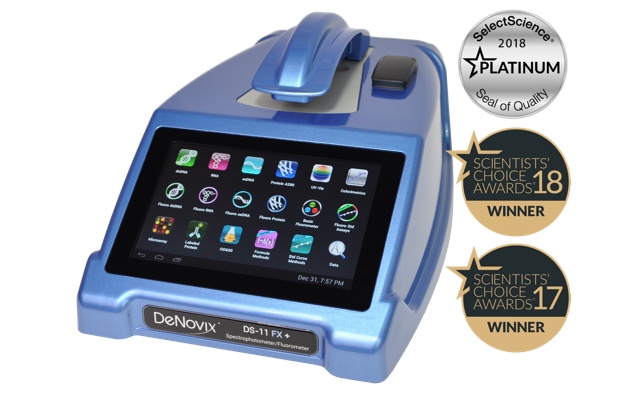When DNA has been extracted the next phase of most experiments requires a known concentration as input material. There are many ways to measure DNA concentration, such as UV absorption, fluorescence dyes, and electrophoresis.
DNA spectrophotometers are often used to measure concentration and this article will outline how they work and why they are used.
What are DNA Spectrophotometers Used For?
Spectrophotometry is an important method that is used in a range of biochemical experiments which include DNA, RNA, and protein quantification and quality control. In these applications, samples are typically only available in small quantities, and non-destructive analysis is preferable. Using a microvolume spectrophotometer (sometimes referred to as nano volume or nano drop spectrophotometers) minimizes sample use for quantification, typically requiring only 1µL of the sample.
How do DNA Spectrophotometers Work?
Spectrophotometry is a form of electromagnetic spectroscopy, pertaining to the quantitative measurement of the transmission or reflection properties of a material as a function of wavelength. DNA Spectrophotometers use detectors that record the intensity of a light beam at a range of wavelengths.
DNA spectrophotometers are frequently used for ultraviolet, infrared, and visible radiation, however, they can also interrogate many other elements of the electromagnetic spectrum. Wavelength range (the colors that it can transmit through the test sample) is an important feature of DNA spectrometers. Additionally, the sample-transmission percentage, the logarithmic range of sample-absorption, and occasionally a percentage of reflectance measurement are important features for some applications.
In a solution, DNA spectrophotometers can measure the levels of ultraviolet light absorbed by the bases. DNA and other nucleic acids absorb light at a peak wavelength of 260nm. The amount of light absorbed is proportional to the concentration of DNA in the sample. The concentration is calculated from the amount of transmitted light using the Beer-Lambert equation. To quantify DNA with a spectrophotometer, the DNA should be suspended in a solvent and the spectrophotometer should be blanked with the solvent to correct for any background absorbance.
Spectrophotometers are extremely precise, accurate, and sophisticated devices, which can be used as a benchtop or models in labs or portable for fieldwork.
DS-11 Series DNA Spectrophotometers from DeNovix
The DS-11 series from DeNovix offers a revolutionary performance in the field of spectrophotometry. It is compact and easy to use, with the ability to offer full spectrum UV-vis analysis with fluorescence capability, meaning it works well for fast nucleic acid and protein quantification. If you would like to learn more about how DNA spectrophotometers from DeNovix could help with your DNA quantification, contact us today for more information.



